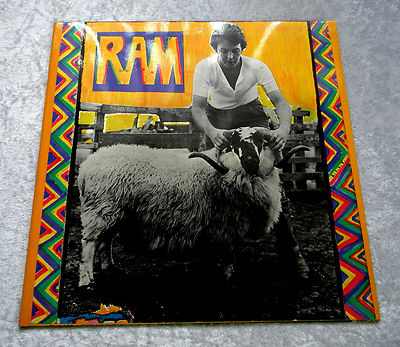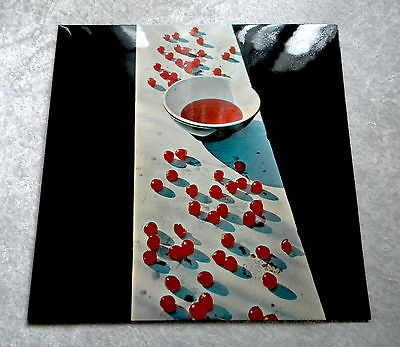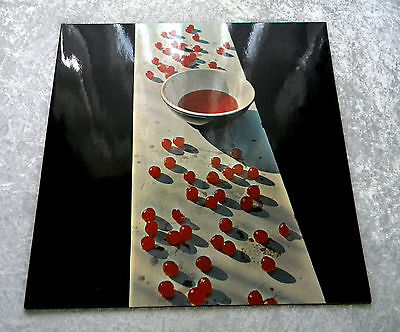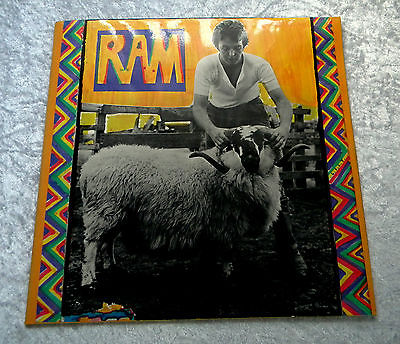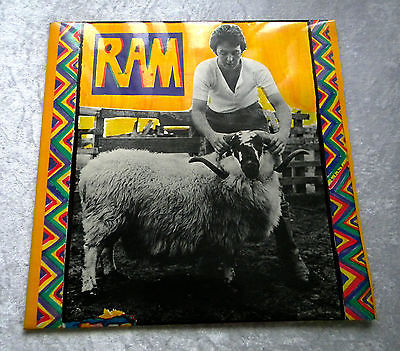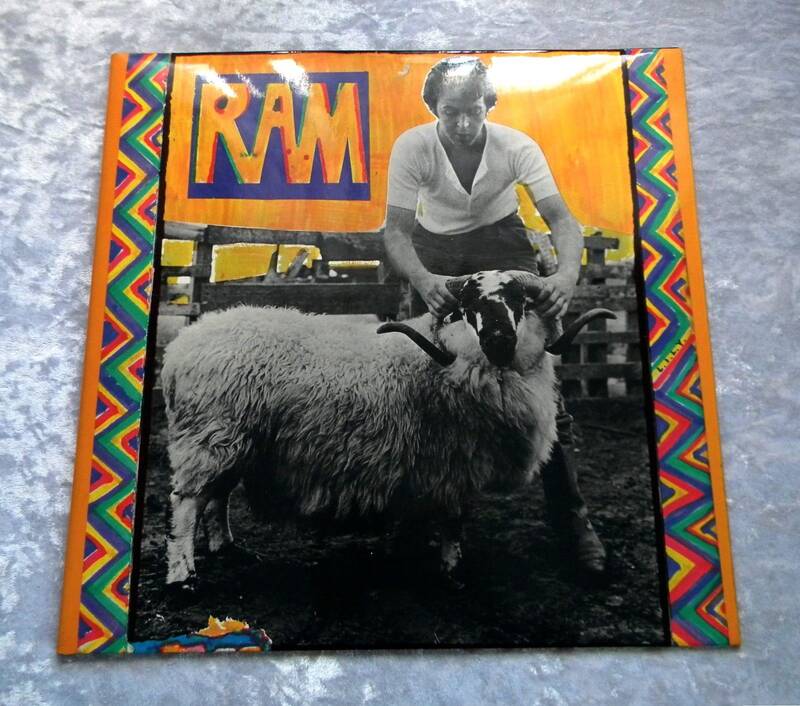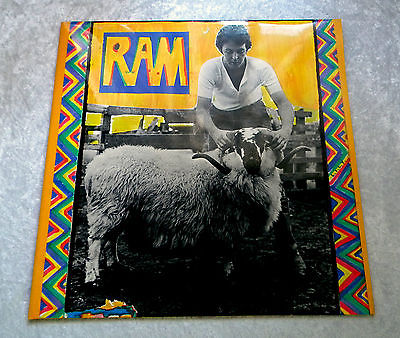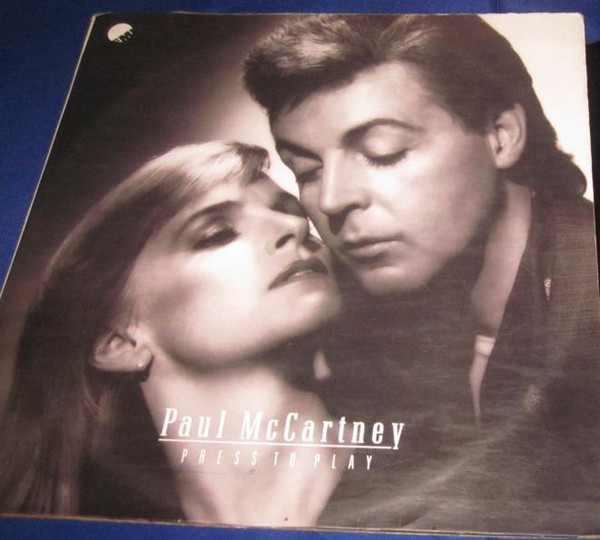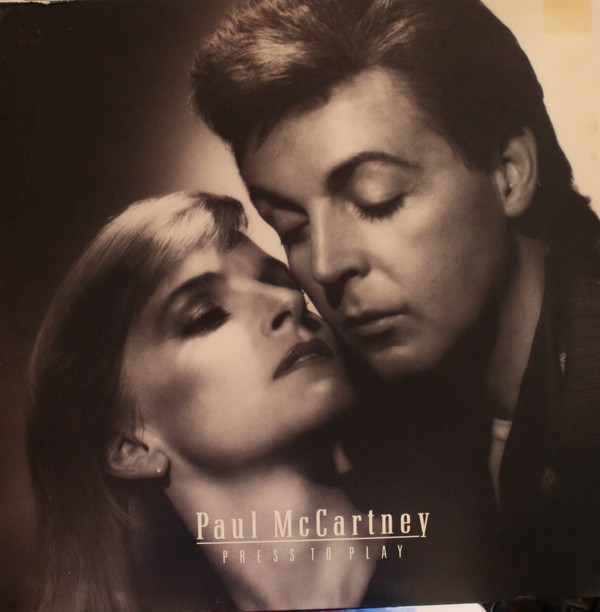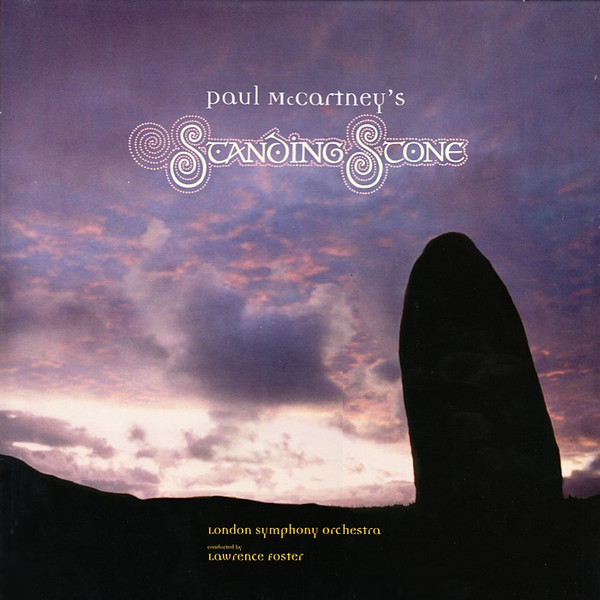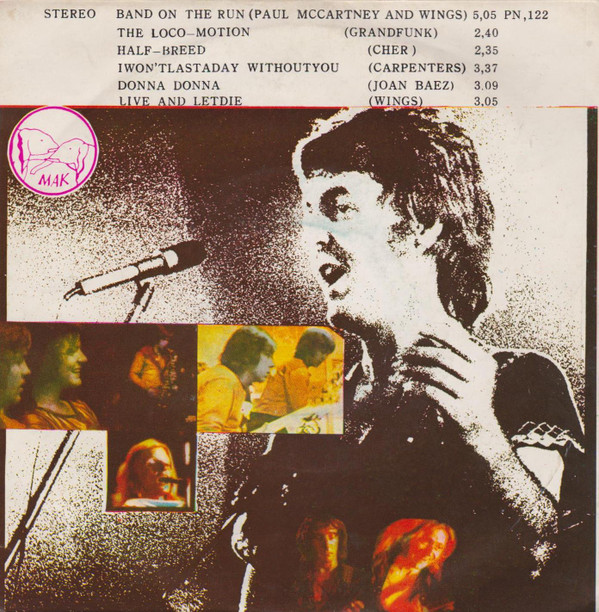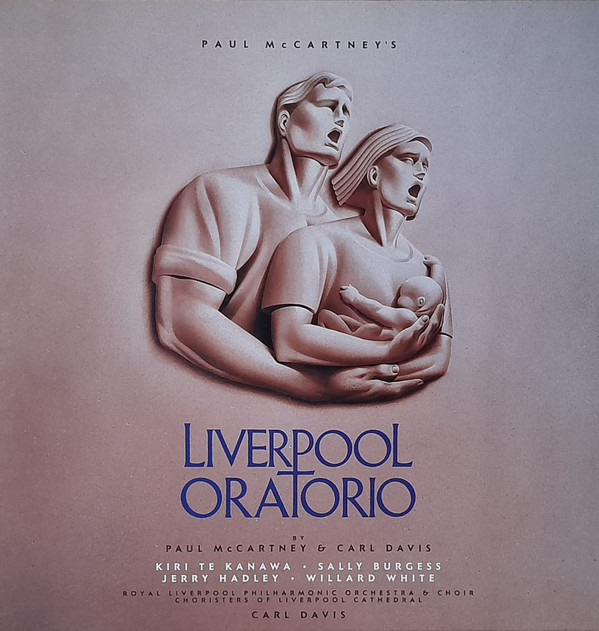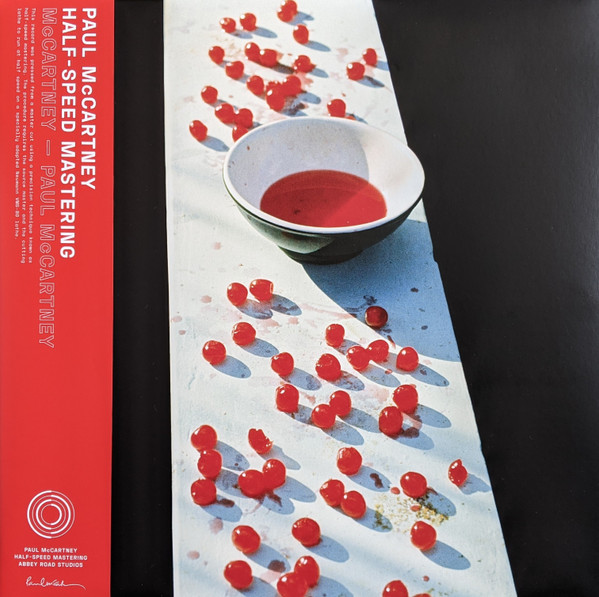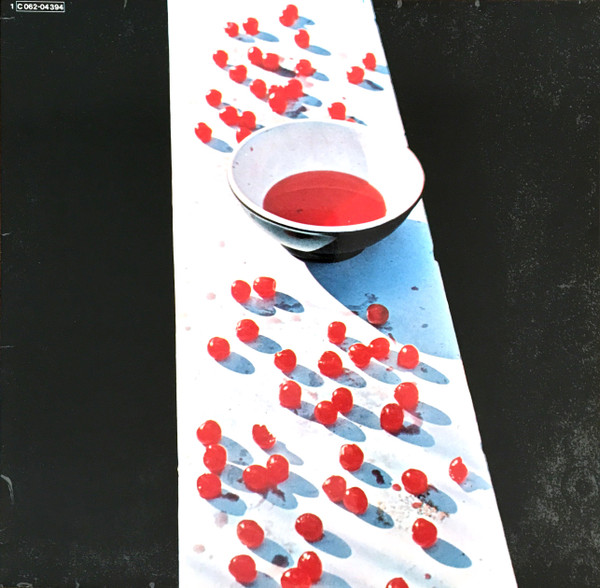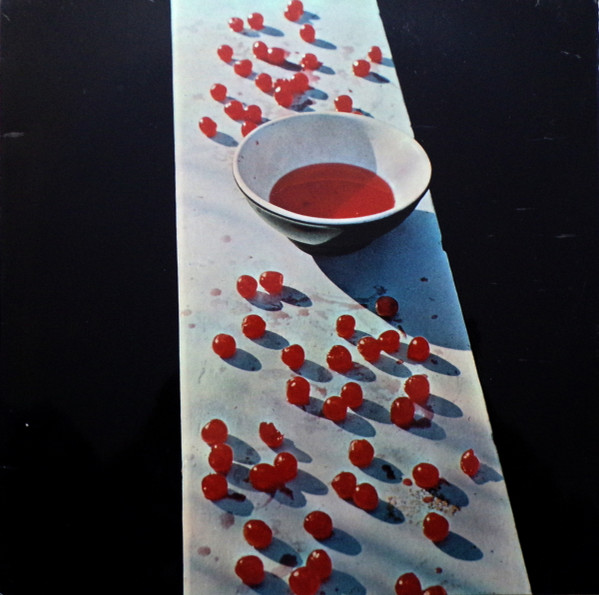Item Description
Maybe I m amazed at the way you love me all the time, Maybe I m afraid of the way I love you, Maybe I m amazed at the way you pulled me out of time, And hung me on a line, Maybe I m amazed at the way I really need you.
Maybe I m a man and maybe I m a lonely man, Who s in the middle of something, That he doesn t really understand, Maybe I m a man and maybe you re the only woman, Who could ever help me, Baby, won t you help me understand? Maybe I m amazed at the way you re with me all the time, Maybe I m afraid of the way I leave you, Maybe I m amazed at the way you help me sing my song, You right me when I m wrong, Maybe I m amazed at the way I really need you.
Maybe I m a man and maybe I m a lonely man, Who s in the middle of something, That he doesn t really understand, Maybe I m a man and maybe you re the only woman, Who could ever help me, Baby, won t you help me understand? PAUL McCARTNEY: McCartney LP.
UK ORIGINAL/FIRST PRESSING, 2nd MAY, 1970.
McCartney was released the 2nd May,1970 and peaked at No.2 in the UK charts, residing there for 32 weeks meant it was being pressed and selling in a continuous cycle until December, 1970.
There are very first pressings made at the beginning of a huge scale of pressings, the middle and the end, this record was made near the end but the fact this has a dark green Apple label on Side 1, places this alongside the May, 1970 original/first pressings.
A few digit rises were perfectly normal for all EMI records by 1970, which obviously includes the Let It Be album issued in the same month, very much part of a large chain of manufacturing required for all big selling titles.
Original/first pressing is the correct term, I m placing it into the correct perspective of a stunning unplayed/Mint condition, 44 year old, major album released a few weeks before the Beatles broke up.
As this was on sale in a record shop on the day of release, I should just state a first pressing but I decided to give a double billing as original/first pressing, if anyone disagrees, that is their prerogotive.
However, they would be completely wrong, as usual, EMI s machine stamped coded indexing was not confined just to the maitrix, because the mothers all first pressings were derived from, were liberally used out of sequence to the maitrix I do not have the time or inclination to enter debates in long email exchanges, I end up discussing events I personally experienced when buying these records on their release, with people who were not even born yet or living in a totally different country to the UK , if not both The last McCartney I sold earlier on in April, was also in true Mint condition, with the same maitrix and stamped indexing configuration as this record, it also matched all the printed items as first editions.
To avoid any fuss I settled for just stating original, but I have had enough of that and decided to tell it exactly how it happened and combine original with first pressing/first edition, because they are all one and the same Just in case someone is still poised ready to send an email insisting this is not a first pressing, just glance down to the EMI Stamping Codes section, you will see that not only is this 3U / 4U a first pressing, this record is a very first pressing An unplayed true Mint McCartney album that was bought on the 2nd May,1970, is major enough without having to state the obvious, why I saidto cynics, please read and digest the stamping codes at 9 o clock on both sides, where I will also give the actual numerical sequence per individual side, the codes signify.
Every thing I now itemise is unique to first edition s/originals/first pressings.
FIRST ISSUE ONLY, DARK GREEN SIDE 1 APPLE LABEL: PCS 7102.
AS AN ORIGINAL/FIRST PRESSING THE LABELS HAVE PAUL S SONG PUBLISHING CREDITS STILL AS FOUND ON ALL BEATLES RECORDS Published By Northern Songs.
ALL FOLLOWING SOLO ALBUMS LIKE, Ram Wild Life RELEASED IN THE EARLY 970 s, CONTAINED UNIQUE TEXT CONTESTING Northern Songs PUBLISHING RIGHTS.
BUT THE McCartney LP WAS ISSUED BEFORE THE BEATLES HAD EVEN BROKEN UP AND LITIGATION BEGAN.
THEREFORE IN THAT MAY - DECEMBER,1970 PERIOD OF BEING A CURRENT CHARTING LP, THE LABEL S ON THE ORIGINAL PRESSINGS ONLY, EXCLUSIVELY HAVE THIS SIMPLE PUBLISHING CREDIT Published By Northern Songs.
MAITRIX: YEX 775 - 3U / YEX 776 - 4U.
EMI STAMPING CODES RO 1 / M 1 Side 1 Uncoded: RO 1 is, No.20 record side,pressed from the 1st mother.
Side 2 Uncoded: M 1 is No.
4 record side, pressed from the 1st mother.
Records have to be pressed from two metal different stamping discs per side, why you generally see different mother mother digits on different sides.
For example you can have 1 4 or 3 6 , the combinations are endless because the indexed mothers were not used strictly numerically.....especially when manufacturing them on the colossal scale for a current member of the Beatle s first solo album.
Experienced vinyl buyers do not need it explained, but they are in a small minority and I do not have the time or the inclination to constantly re-state the same conclusions I arrive at in my long and fully detailed descriptions, in emails.
No mysteries, guess work or inventions, a dark green label on a massively thick heavyweight record containing stamping codes that low, simply has to be a first pressing.
It had to be pressed before the scheduled released date in readiness for distributing to British record shops, regardless of being from the beginning, middle or end of the the pre-release manufacturing.
If you walked into any UK record shop during the week beginning, 2nd May, 1970, it was sold to you as a first edition....which it was Nobody said, Let me examine the maitrix and stamping codes before I buy it, in 1970 or any other year in later decades up to 2014.
Positively an original/first pressing with the sides containing 1 / 1 digits to signify the mother s, directly in line with EMI indexing of all the Beatles LP s, including that parallel release of Let It Be in the same May, 1970.
The maitrix end digits also follow the same precise pattern as Let It Be, personally I believe it was because the 1969 Abbey Road album did not have any rises to the ending digits of -2 / -1 and by May,1970, millions of records were made without any movement on the ending digits.
That was left unchanged to the end of 1970 to early 1971 and why lighter green Apple labels on Side 1 still had the same maitrix, in spite of visually clearly not originating in 1969, or even contemporary to May,1970 releases of McCartney Let It Be .
You will see endless lighter green Apple label Abbey Road LP s being falsely sold on ebay as first pressings 1969 , when in reality, the covers and records were made one year after the October,1969 initial release During December 2013, I listed and sold a -2 / -1 Abbey Road with a slightly lighter green label and correctly stated that it was pressed in late 1970, this time I cannot, because the tone of the green Apple label on Side 1 is precisely that May,1970, I know this was pressed before the May release date, that believe is backed up by the above solid facts and genuine experience as a Beatles collector since January, 1963 and over decades of professionally selling records.
This time EMI indexed the ending digits per batch for McCartney Let It Be and this record has the logical natural rise of only 1 2 digits per Side, which was following exactly the same recognisable pattern as the Let It Be album.
There was not a Box Set taking the -2U /-2U first batch, then the standard Let It Be LP s -2U /-3U , -3U /-3U - 3U /-4U etc.
A few weeks I gave almost identical maitrix indexing for a huge selling EMI album, nine years later Pink Floyd s double album The Wall still had the U letter and the above digits were on all the very first pressings/ originals/ first editions, except EMI did involve 1 for the maitrix, this record does have two 1 digits in the run-out grooves, but at 9 o clock as stamped codes to signify the mothers per side ORIGINAL 1970 EMI INNER SLEEVE, IN UNUSED, UNSPLIT UNAGED NEAR MINT CONDTION.
Like the Let It Be first pressings, McCartney did not come with an Apple inner, Ram was the first of Paul s solo albums with an Apple inner sleeve, but not all the first pressings had had one.
Even this is unique to 1970, the curved corners on the top and bottom are finished to actual points at the meeting positons with the central flat sections between them.
Please see my picture for the design that was swifly replaced with the original, standard curved corners by EMI.
In fact, they kept and used most of them after 1970 for the records being contractually pressed for Chrysalis Island Records etc.
etc.
FIRST ISSUE GATEFOLD COVER, LIKE Sgt.
Pepper AND SO MANY OTHER ALBUMS, TWO VARIATIONS ALSO EXIST FOR McCartney, THIS MUST SOUND CONFUSING FOR NEWCOMERS TO 60 s 70 s UK RECORDS AND COVERS, BUT IT WAS PERFECTLY NORMAL IN THIS ERA TO AVOID CONFUSION I WILL GIVE THIS COVER S UNIQUE FEATURES AND INCLUDE THE OTHER MINOR VARIATIONS WHERE THEY APPLY.
OTHER TO THAT, THEY BOTH HAD COMMON FEATURES AND FIRST ISSUE COVERS WERE UNIQUE WITH THIS COMBINATION OF EXCLUSIVE FEATURES: I WILL TYPE THIS COVER FOR THE FEATURES TO MAKE CERTAIN ALL IS CLEARLY STATED AND UNDERSTOOD.
1.
FULLY LAMINATED ON THE OUTSIDE AND BOTH PANELS INSIDE.
THIS COVER 2.
ONLY McCartney WAS PRINTED ON THE SPINE, ON THE TOP SECTION, AND THE REST WAS LEFT BLANK OR PLAIN WHITE,WITHOUT ANY CATALOGUE NUMBERS OR MENTION OF APPLE .
COMPLETELY DIFFERENT TO THE SPINES ON Abbey Road , Let It Be 1970 EXPORT EDITIONS OF THE Hey Jude LP.
MOST SPINES HAD IT PRINTED EXACTLY WHERE THE DOUBLE FOLD OF THE SPINE HINGED, SO ONCE THE GATEFOLD WAS OPENED, McCartney HAS ALMOST DISAPPEARED.
THIS COVER...AND THIS SPINE HAS THAT WHEN SHUT 3.
THE TRACK TITLES ON THE BACK ARE IN TWO DIFFERENT COLOURS ON FIRST ISSUE COVERS ONLY: THIS COVER SIDE 1 TRACK LISTING: PRINTED IN WHITE ON PAUL S LEATHER FLYING JACKET THIS COVER SIDE 2 TRACK LISTING: PRINTED IN PALE BLUE ON THE BLACK BORDER OF THE COLOUR PICTURE.
THIS COVER ALL LATER COVERS / RE-ISSUES HAVE BOTH SIDE S TRACKS PRINTED IN UNIFORM WHITE.
VARIATION 1 THIS COVER Side 1 s Tracks and Instruments and voices by Paul were printed in yellow, Side 2 s tracks were also in pale blue.
4.
UNDERNEATH THE TRACK TITLES AND CREDITS, PRINTED IN BLUE: NOT THIS COVER VARIATION 1 THIS COVER EMI Records The Gramophone Co.
Ltd.
Hayes, Middlesex, England Printed and Made in England VARIATION 2 Apple Records An EMI Recording Printed and Made in England The clue to those minor variations is found above in the one common to both, Printed and Made in England , as I regularly write when EMI first issue covers did not have specific printer credits, e.g.
Ram , Imagine Wild Life , that meant EMI had contracted two or maybe three different printers to make the covers.
Without Apple printed on the spine, obviously it was a mistake not to print that on the bottom of the back cover, the different colours on Side 1 s tracks once again tells of two different printers at work.
Variations are not inexplicable mysteries, just simple errors because it was not a computer controlled world back then, but the stunning quality of the McCartney gatefold cover was consistent to both variations.
THE ULTRA GLOSSY FULLY LAMINATED COVER HAS UNFADED, ULTRA BRIGHT COLOURS OUTSIDE AND INSIDE.
Unused to the extent the laminate is still not fully stretched out, I did not force that flat though to take pictures of the fully opened back, just how it was comfortable, or pictured with the record on the opened outside.
The spine is very tightly gripped by the lamination, obviously because the gatefold has never been fully opened and that affects fully laminated gatefold covers far more than when only laminated on the outside.
The spine has an inside or internal rib and so that also has to give and loosen with use, on the other hand, it probably included the lamination being tightly wrapped back in 1970, which is there to visually see, the top of the spine is not as expanded as the middle and bottom sections, which means the only title, McCartney at the very top is inside the tight spine and only just visible.
The same affected Sgt Pepper covers but the title was in the standard central position...
if printed upside down In place of a spine album title picture, I took one of the whole length of the spine with the cover standing upright and opened to the comfortable position, I never ease open laminated gatefold covers, that feel and appearance of being brand new is extremely rare and it would be like opening or removing shrink wrapping.
Please see my picture of the front for how like brand new this cover looks, beyond a slight darkening to the top of the spine and minimal brushing to both spine ends, there is no wear.
In reality just unavoidable traits of standing in storage for 44 years, gentle pressure on the spine endings or left side corners could be said for gatefold covers made in 2014.
Anything here was naturally formed from standing in storage for all those decades, an inevitable but reasonable record impression with a few tiny related laminate edge lines found on all covers.
Laminated inside and out, creates a really beautiful gatefold cover and the natural formation of a few laminate edge lines is a small price to pay for such stunning deluxe quality.
The back is superb and the minor points raised here must not detract from an unused, unaged covr holding a true Mint, unplayed record.
A Near prefix is ridiculous under the circumstances but all that is required for such a stunning and beautiful cover that was never used to remove and replace the record after it was initially inserted at EMI s pressing plant in April,1970 THE COVER IS IN A MINIMUM OF NEAR MINT CONDTION.
THE RECORD IS IN UNPLAYED/MINT CONDTION.
Please see my close- up picture of Side 1 s green Apple label centre for the immaculate, unused labels, clearly no spindle alignment traces and the vinyl does not have any form of use traces.
No marks, scuffs or even any factory handling comes under near invisible to invisible , a pristine record in every aspect.
SIDE 1 The Lovely Linda That Would Be Something Valentine Day Every Night Hot as Sun/Glasses Junk Man We Was Lonely SIDE 2 Oo You Momma Miss America Teddy Boy Singalong Junk Maybe I m Amazed Kreen-Akrore All Songs Written By Paul McCartney.
All Instruments Played By Paul McCartney.
Bass, acoustic guitar, lead guitar, drums, piano, Mellotron, organ, toy xylophone a bow and arrow.
All Vocals By Paul McCartney, With Linda Contributing Some Backing Harmonies.
When Neil Young was inducted into America s Rock and Roll Hall of Fame in 1995 by Pearl Jam lead vocalist, Eddie Vedder, Neil s acceptance speech contained a surprising revelation.
Of course like every rock musician, Neil was influenced by the Beatles and after forming and leaving Buffalo Springfield, his solo career began with two albums that contained lush orchestral production s alongside his better known 1969 music.
Neil s speech revealed the album that really influenced his 1970 s career, believe it or not, it was this McCartney album that changed his direction on albums like After The Goldrush Harvest.
Paul s simple approach to the production, combined with his genius to write songs of greatness, had Neil Young playing McCartney over and over again, one musical genius had a massive influence over another and the shape of the 1970 s decade was also affected by Paul performing the entire album himself, Linda contributed some vocal harmonies, but this was a solo album in every meaning of the word.
The influx of singer /songwriter albums started in May, 1970, Paul s acoustic songs stood out on The White Album and I remembered to include that in April of this year, previously I had been meaning to tell that story this for years, but while dealing with the ever expanding extensive pressing details, more interesting things are forgotten.
That demonstrates the influence of McCartney and how it is still is underrated as a masterpiece of songwriting performing, the rest will be detailed as I get into the rest of the description.
Well, does it get any better than this? An absolutely stunning unplayed UK original 1970 McCartney , without one single trace of being on a spindle on either side s label.
The heavyweight record is still like brand new, gleaming away with that very special glossy top surface of a just pressed record, no marks or scratches of any kind and I consider that amazing for this 1970 record I always feel obliged to mention all records had to be handled before being bought at pressing plants and record shops, but not played before being sold this time.
The rarity of van unplayed true Mint original, forces me to consider if it is inappropriate to play that record myself.
Without any slithers of vinyl shavings to risk disturbing in the centre hole, one of my undetectable and untra careful plays will give an opportunity to describe the tracks and include details of the recordings.
I m 100 certain the sound quality of this incredible very first pressed record from first mothers, will be sheer perfection, an EMI /Apple 1970 record like this, places you only one step away from Abbey Road s Master Tapes.
I have never once in all my genuine long years of experience, ever found any decade s EMI / Parlophone / Apple unplayed record that was not of true Master Tape quality.
I also consider McCartney should really be be thought of and treated like a folk music, acoustic album, because the majority of the tracks do feature acoustic melodic music, the low profile production created the wonderful magical feel that was so endearing.
A whole decade passed and after all the massive success of Wings and full scale world tours etc.
Paul once again returned to the simplicity in 1979 - 1980 for the McCartney II album.
Any artist with Paul s genius to write such incredible melodies, would always excell with acoustic recordings and my audio standards for this album are unflinching, only perfection will do.
Confidence established way back in the 60 s and 70 s, when I became compulsive about recording records onto first reel to reel tapes and then cassette tapes, EMI were that perfect with their pressings.
Some sellers and collector s fail to understand the benefits of EMI indexing their pressings, that was essential to quality control and should never be demeaned today.
I just went into great detail about the gatefold cover, even including the minor variations, little has been documented about such an important album, the information should be useful.
This is one of my most loved solo albums from Paul s long career, hard to believe he s 68 now, so I will give a full background to the circumstance surrounding the end of the greatest band of all time and how Paul McCartney recorded his first solo LP, with only Linda sparsely helping.
I will never forget the torrent of abuse and spiteful criticism directed at Paul s first solo album by the world s music press on 2nd May,1970.
Yet only 6 days later the same journalists were falling over themselves to heap praise onto the McCartney genius for contributing Let It Be and The Long Winding Road etc.
to the Beatles final album.
Ignoring how every song on McCartney was composed while Paul was still a member of the greatest band on this planet, not only had the Beatles performed recorded versions of so many of the tracks, had they stayed together in that May, there was no question they would have appeared on the following Beatles album later in 1970.
Time has a way of getting to the truth, a No.
2 album and that 32 weeks charts residency in the UK, told it s own story in 1970.
Fourty four years later the musical contents those who were so dismissively visciously put down, but never wrote a song or made a record themselves, have been proven completely wrong.
For such a huge selling LP, you would expect even musically average albums to be readily available in top condition, but today the terrible state of the vast majority of genuine original pressing, clearly show how loved and extremely heavily played the records actually were in 1970 and for all the decades that followed.
Perhaps none of that is still remembered but it wounded Paul deeply, to hear how much it hurt him, you only have to listen to his next album, Ram, after all,the fragmentation of the Beatles was emotionally draining enough, here s a brief sketch of the events surrounding and inspiring McCartney.
The January 1969 Get Back / Let It Be tapes were left untouched and the Beatles moved onto recording Abbey Road, as soon as it was released in October, 1969, the silly rumours about Paul being dead were instigated by him crossing the road in bare feet on the famous cover.
Paul had indeed disappeared from the eyes of the media and public around that same time, adding fuel to all the nonsense being reported that there was a cover up about his death.
Convinced a double for Paul had been used on the Abbey Road crossing photo taken outside the studio, the album s cover was being scrutinised for other hidden messages, it became that crazy Even the parked car s number plate that ended with 28 IF was pounced on and interpenetrated as a clue that Paul would have been 28 years old if he had not just died.
For his 1971 Imagine album, John Lennon even wrote lyric s about the subject of his death for How Do You Sleep, it was in context of the song being a bitter put down and was referring to Paul s music Those freaks were right when they said you were dead.
Paul had simply taken time out to reconsider his career with the Beatles and to begin working on his first solo album, George and John had made two solo albums each, well, four for John if you count John and Yoko s Wedding Album and the Plastic Ono Band s Live Peace In Toronto.
They were all made openly without stating it was the start of solo careers, this time it was becoming a serious matter because Paul was keeping his plans and activities a secret from the rest.
He was recording songs at his home in St.Johns Wood, London, beginning the sessions in December 1969, they were a mixture of new material and songs written over the last two years.
Several songs were written while staying in India in 1968, intended for inclusion on the White Album and in that January 69, the Beatles had played and recorded Paul s latest songs, left unused during a year long delayed release of the Let It Be album and film.
One song, Hot As Sun had an even longer wait because that went all the way back to their schoolboys teenage era in The Quarrymen, the only recording made was onto a domestic reel to reel tape recorder, available on the bootlegs.
Junk , Teddy Boy , Every Night Hot As Sun / Suicide were originally intended to be songs for the Beatles to release.
In his home, Paul had just installed a Studer Four-Track Tape machine, the same as the Beatles used for recording in Abbey Road, with his mikes plugged directly in, he set about working on his own, without even telling the other three Beatles.
He had ordered a mixing console but it never turned up in time, the home recordings were added to by some freshly written songs he recorded at both Abbey Road and Morgan Studios in the New Year of 1970.
Within a few months the whole album was complete, assembled and released.
Paul then announced to the media he was leaving the Beatles to start a solo career, it caused quite a storm and he used the ensuing publicity to allow the spotlight fall on his McCartney album.
In effect it was the official end of the Beatles, John Lennon greeted the release of McCartney and Paul s announcement, he had now left the Beatles, with his usual warm good humour, saying he wished he had thought of using the Beatles break up to promote his first solo LP He and the others were far from pleased with Paul for deliberately releasing McCartney in the same month of May as the long delayed Let It Be release.
Paul himself was still angry about how his Long And Winding Road and the album s title track being overdubbed by Phil Spector without his consent.
All this happened a long, long time ago but for all original Beatles fans they were really monumental events that were very dramatic to watch unfolding piece by piece.
It was strange to have a Beatles solo LP and what was obviously the last ever Beatles album to buy together in the same week, a mixture of great sadness and excitement at having two new records.
Paul s solo LP met with the hostile reaction from the press, the Beatles were such an institution in England, any split loyalties fans felt soon evaporated after hearing his brilliant first solo work, it was much easier to blame Yoko Composing all the songs on McCartney was to be expected from a musical genius, he played every instrument, including the drums and produced the LP.
With Linda on hand to take the pictures for the gatefold cover s artwork, again, a solo LP in every sense of the word, a staggering achievement considering the tension and accusation s flying around during the Beatles final hour.
A No.2 UK chart position was thoroughly deserved but I m sure Paul would have been disappointed to not make the Top Spot.
Now at 44 years of age, the sales mean nothing in terms of how tough it is to find genuine first pressings/first issues/originals without severe wear to both the cover and the record.
It rarely turns up in anything better than V.G.
condition, for an album with so many minimalist productions and acoustic tracks, that is just not good enough for such a major album.
I love this record s music too much to even think about a VG record as an alternative, I have only sold four top condition copies on ebay in 13 years trading on here.
Patience is a virtue and I am delighted to now have this stunning Mint, unplayed original pressing.
I see copies being offered as first pressings that certainly are not, it s so easy to spot them that should never happen.
Please see my main headings for comprehensive pressing details, I can finally get to hear the record and describe the tracks.
McCartney was first pressed on on 60 s standard and quality vinyl and that drastically affected the sonic properties of the music, this will have has the all of incredible audio sharpness and definition of individual sounds I demand from any Apple or EMI first pressings.
As so many of the tracks are acoustic and recorded without a full production, discussing any natural static a Mint 1970 record is absurd, but I will do all the same and it is best described as a low level natural static.
I never want to imply or suggest a record does not sound......like a record, but I do insist on them playing exactly as they were pressed in their own time period, stunningly As ever all will be honestly and accurately described and some background to how Paul created the tracks.
I will make sure to add plenty of that hopefully that will be of interest because as I said, that is nopt available in text books.
An all consuming hobby for all the Beatles and their individual solo music, there is far more to these amazing records than just the basic first pressing details.
I will only play the record once but the detailed info about the tracks will be interwoven later and that will allow me to make good use of that dedicated gathering of precise, dated details about how this masterpiece was made...
amazingly without John, George or Ringo being aware a whole album was being made That alone is worth the extra after hours info, if you are going to do a job...do it properly.
Side 1 s run-in grooves do not have the usual explosive crackles pops, near silence without hardly any of the just mentioned natural light static in the non-music opening band, not intended to be silent but this record nearly is.
So that justifies saying any fractional faint static was how the record was first pressed, please remember this is the first play and not even remotely played in yet.
Now I can concentrate on the music, after a perfect start, the acoustic guitars and gentle percussion ring out in fantastic sharpness and perfect audio clarity.
Paul s acoustic guitar is in the right channel and his percussion panned in the left speaker, the first made stereo mix was that of the 1960 s decade, the total channel separation of true stereo.
Talking about that just ended decade, Paul s exceptional acoustic guitar playing talent really came to light during the White Album, on the superb tracks like, Blackbird, Mother Nature s Son and I Will.
He ll always be regarded as one of the UK s greatest ever bass guitarist, but whenever he picked up an acoustic guitar, he was just as gifted.
The Lovely Linda was the first track Paul recorded at home to test out using the newly delivered Studer tape recording machine, the same equipment used for example, Sgt.Pepper was recorded on in Abbey Road Studios.
Paul was very familiar with the revered, valved Studer machine, being with George Martin for eight years, he had an ultimate teacher.
A truly beautiful song, if only 30 seconds long, playing two acoustic two acoustic guitars and a bass guitar, he also used just a book to slap out that rhythm by hand This was recorded just before the Christmas of 1969, intended to be a sampler for a full length version, but it served perfectly to open up the album with, I m going to enjoy writing this description The sound is is just incredible, with the vocals in pin-point definition as well, the first gap runs smoothly and silently, so the very quiet intro to That Would Be Something only has the faint static I am getting fed up wasting time over, I can comfortably anticipate finding no irritants or pressing issues on the entire two sides.
I take Mint grading s very seriously and I want to concentrate on the music, not any natural ultra faint static to vinyl from a 44 year old record.
That Would Be Something was the second song recorded at home away from the glare of publicity, that was ever present any time the Beatles entered Abbey Road Studios, the famous Apple Sruffs who George composed a song about, were standing there all day and usually night, hoping for the merest glimpse of an arriving or departing Beatle.
As with the previous track, this was written on their Scottish farm earlier in the year, one of Paul s really beautiful melodies with a great touch of blues, with a really outstanding vocal.
Coping remarkably well without Ringo involved, he played a tom-tom and cymbal for the track s percussion, an acoustic and an electric guitar, plus his bass guitar of course.
The completed 4-track tape was taken into Abbey Road Studios for the mixing on the 22nd February, 1970, Paul who had played every instrument, also mixed this track himself, being heard and enjoyed here in just stunning sound quality.
This was given a stereo mix George Martin himself would have been very proud of.
I must stress you will only hear Paul s intended true stereo mix from a first pressing, then linking in total silence for the fantastic intro to Valentine Day, I included that gap because this is a tricky one, it usually has very irritating loud crackles and clicks, because of the way the guitars and percussion play alternately, leaving space in between for needle noise to spoil the lovely effect.
Not on this record, this is immaculately clean and clear of any problems and continues for the track s whole duration.
Valentine Day was positioned in the same third track order on the album, exactly like it was the third song recorded in Paul s St.
Johns Wood home.
If anyone does not know London very well, he could almost walk to Abbey Road studios from St.
Johns Wood.
Playing the same instruments, Paul recorded a superb instrumental, showing his dexterity now as a lead guitarist, the role he first played as a schoolboy until he introduced George to John.
These were magical moments, to step outside the Beatles for the first time was alien to Paul as a musician in 1969 to 1970, George and John made solo albums while still in the Beatles, John Lennon also released a succession of singles.
Paul had only previously acted in the role of a record producer for a few artists like Mary Hopkin, plus one soundtrack album, The Family Way.
The finished recording of Valentine Day was also taken along to Abbey Road with That Would Be Something for mixing on the same date, which was in fact just eight days after Valentine s Day, I have to say how silently the gap runs into Every Night, such perfect clarity for the wonderful stereo effect during the intro.
From the right channel only, the very gentle acoustic guitar is contrasted by very loud drum beats from the opposite speaker, Every Night was one of the songs the Beatles rehearsed with a view of inclusion on Let It Be in the January, 1969 filming sessions.
One of Paul s most beautiful melodies of all time, that includes during the 1960 s, he still had the lyrics to finish though and that waited until a Greek holiday in the Spring of 69.
The gentle acoustic guitar intro is heard in stunning crystal clear sound, the sheer clarity of those vocals are the very sound quality I was talking about earlier, insisting all first pressing were made with.
If you listen closely, you actually hear the Greek musical influence in the style Paul plays the guitar here, Beatles fans might not know the 1965 Rubber Soul track, Girl, also had a Greek style acoustic guitar part after a holiday there four years before the McCartney family returned in 1969.
Every Night was the first track recorded in a professional studio, this is still following the sequence of the actual recording chronological order of the album s track order.
Paul even used the Beatles favourite Studio 2 in Abbey Road to record Every Night , on the same day he was mixing it onto 8-Track Tape, on the 22nd February.
Two days later, further re-mixing was made and the song was finished as heard on the album, well a first pressing of the album For some reason the next gap is much longer than normal, even so, it s silent and you are unaware of the extra length, this is before a track that has a tremendous history behind it.
Hot As Sun and Glasses dates all the way back as far as The Quarrymen, to those very earliest Beatles days when they were still named after their school.
Although they played it regularly, it was still missing the middle eight, which was added there and then during the actual recording at Morgan Studios, then dubbed onto the basic Studer home recording tape.
The track that has one of the most substantial productions on the LP, Paul used extra instruments, such as the organ and bongos etc.
The second section, Glasses , was a recording he made up by several wine glasses with his finger rubbed around the top rims resonating, then overdubbed on top of each other.
Just a brief part of Suicide is heard right on the ending, full versions were recorded by the Beatles during Get back sessions.
The very quietest sections only have the slightest static because these very first pressings were amazingly mastered and pressed, the sound engineers had Paul looking over their shoulders, he was going up against the Let It Be album The linking grooves run silently, this really is a mighty impressive pressing, people do spend too long peering at stamped digits, All you need....are your ears once a first pressing is established.
That means the very quiet intro to the stunning Junk is perfectly clear and not suffering from the usual intrusive noise, static even from pristine condition vinyl is a reality but this is much too trivial to take seriously.
Superbly clean is a major rarity for one of the most beautiful and delicate melodies on the album.
Junk was mentioned before as one of those 1968 compositions written in India during March 1968, subsequently recorded at George s house Kinfauns, as an acoustic demo in May 1968.
This is a superb version, initially recorded at Paul s home in St.
John s Wood with acoustic guitars, bass and vocals.
Then the tape was taken into Morgan Studios for the percussion additions and some vocal harmony overdubbing, such a beautiful melody may well have deserved a much kinder title, it has such wonderful sound quality from this record, ultra sharp and perfectly clean and clear.
I love hearing all music at full volume and it also tells me there is no distortion on the entire record.
Man We Was Lonely was written in bed the morning before Paul and Linda went into Abbey Road Studios on the 25th February.
It was the first song Linda ever sang backing vocal harmonies to Paul s lead, Wings were still a very long way off this early on in 1970, there was still the Ram LP to come before they were formed.
Man We Was Lonely was completed on the same day, with the overdubbing of a Fender Telecaster, bass, guitar and a bass drum.
Paul seemed to have that uncanny ability to just pluck stunning songs seemingly from mid-air The superb acoustic intro plays in immaculate sound quality, the lovely vocals are in astoundingly clear sound.
Paul s lead guitar playing is exceptional during the track, his country music accent works perfectly with his almost steel guitar sound.
Oo You opens Side 2 and the intial run-in grooves are completely silent before and during the intro, even when Paul speaks to ask the sound engineer for more guitar, that s heard in crystal clear sound.
A rock track with a fantastic vocal from Paul, who added that to an instrumental taped at home, when he was no doubt wearing headphones with the guitar too low on the intro in his ears.
The lyrics had been written while Paul was transferring the 4-Track Tape at Morgan Studios, plus the electric guitar, percussion and a bass drum.
He gets such a great rock sound from the driving guitar, sounding not unlike a certain John Lennon on his own first true solo LP.
I can t help wondering how a full Beatles version would have sounded with their input, a really great song, after Ram that up-coming Wings era would next benefit from Paul s ability to create stunning music like this from nothing, he just produced a brilliant song from his born with genius.
Great stereo panning effects on this track, the first gap was of course silent and then a sound engineer calls out the earliest song title.
Momma Miss America was another track from Paul s home taping in St.
John s Wood, this was purely an ad-libbed song with the working title still left on the beginning, as just noted with the call was for Rock Roll Springtime.
A remarkable instrumental with Paul s bass at an inspired setting, which from this record is exceptionally powerful but sharp, crystal clear and undistorted, especially with the stereo s perfectly separated channels, making it even more pronounced.
Paul s superb lead guitar gives a major insight into the sheer talent of this extraordinary musician, listening to his drumming ability instills even more wonder at one man s musical gifts, if I sound like a long term fan, I am Few solo albums are strictly solo like McCartney was, Linda was the only exception and she was only on a fraction of the album, but when you include the writing, nearly all of the recording as well as the mixing, this was a really phenominal album to have every instrument played by the one man, even the drums.
On that subject, John Lennon once replied to a question Was Ringo the greatest drummer in the world? Ringo wasn t even the greatest drummer in the Beatles, Paul was As usual John was joking, but a serious part to his comment involved how Paul grabbed every opportunity to work out on Ringo s drums.
To verify John was joking, his first two UK recorded solo LP s featured the reliable services of...
Ringo As smooth as silk into Teddy Boy, the song started life being written in India in March 1968, a great deal of time was spent rehearsing this during the 1969 Let it Be sessions, but a completed, full Beatles version was left off the album.
That was at Paul s request, not because John wasn t too taken with the song There is a really long Beatles version version, John soon becomes bored and he sang in the same rhythm, You put your right leg in, right leg out in and do the Okey Cokey, just a bit of fun.
This version was recorded solo at home and also taken along for some overdubbing for the bass, the lead guitar and vocals at Morgan Studios.
Paul s solo version was much simpler than the Beatles recording and works much better because of that, heard from this record in absolutely stunning sound quality.
A near silent gap gives a superbly clear entrance for Singalong Junk, a deeply beautiful instrumental was in fact Take 1 of Junk, a slightly shorter version with only the very basic backing track recorded at home, a mellotron, strings and percussion were added on later at Morgan Studios as the overdubbs.
Nice to have both the takes on the LP though, the haunting melody is in absolutely perfect, sharp edged sound, this stereo mix is very much as if George Martin s strong influences had stayed with Paul when it was time to mix this track.
The next gap is very rarely found as silent as this, as the album s track that always took the heaviest plays on these first pressings, but this has a superbly clean and clear intro.
Static is not being ignored, considering the first play, that is so minimal there is no need to constantly state the obvious, the quietest moments only have vague background natural static, ultra sharpness to the instruments vocals is sheer perfection.
Maybe I m Amazed is still one of Paul s greatest ever songs, the only surprising thing was never releasing this as a single in 1970, but Paul would not allow anything to be extracted from the tracks as a whole.
It would be eventually released as a single but only as a live recording from the 1977 triple LP set, Wings Over America , then this outstanding song became the hit it deserved seven years later.
The incredible sound quality from this record reflects this was was the most produced track on the album, completely recorded in the Beatles favourite Studio 2 in Abbey Road, playing three guitars, a piano, a bass and the drums.
The vocals had multiple layered overdubs with Linda contributing the harmonies, heard here in fantastic audio definition, even the false ending before the instrumental reprise is without any form of surface sound, which also applies to the final set of linking grooves to an amazing recording that made for a brilliant last performance.
I doubt if too many will know where the inspiration for this song came from, Kreen-Akrore was inspired by a British TV programme, The Tribe That Hides From Man, concerning the Kreen-Akrore Indians living in the Brazilian jungle.
The sheer genius of Paul as a multi-talented is contained here, the whole track was built up Paul, piece by piece in Morgan Studios from just a basic drum track.
Guitars and keyboards, with vocal sounds from Paul and Linda, that included chanting and panting like ainimals.
There was a Brian Wilson like eccentric touch because Paul and Linda wanted authenticity, so they even lit a fire inside the studio The sound of a crackling fire was was not used in the end, it was replaced by the sound of snapping twigs instead, there is no surface sound on the entire track, what you are hearing are the twigs being broken.
Roy R M RECORDS.
My lifetime s love of music and records began at a very young age, the arrival of the Beatles and the 1960 s decade in general had a very profound effect.
It was only natural to bring all my first hand experience of collecting vinyl into becoming a professional record seller.
Over twenty years ago now we entered into the wonderful atmosphere of record fairs with the highest possible standards set.
When the Internet became the world s new market place for vinyl, in 2001 it was time to join ebay.
Those standards were rigidly adhered to as they will always continue to be, the basics of honesty and integrity were very much part of the era the music I love originated in, so here is our friendly and very efficient service we are proud to provide EVERY RECORD IS FULLY PLAYED AND COMES WITH A NO ARGUMENT MONEY BACK GUARANTEE.
I USE GOOD OLD COMMON SENSE AS WELL AS A GLOBALLY ACCEPTED GRADING TERMINOLOGY FROM THE U.K.
RECORD COLLECTOR PRICE GUIDE BOOK.
THERE IT CLEARLY STATES Sound Quality AFFECTS EVERY GRADING LEVEL AND THAT IS THE ONE AND ONLY POSSIBLE WAY TO ACCURATELY GRADE RECORDS.
i.e.
COMBINING A STRICT VISUAL INSPECTION WITH VERY CLOSELY LISTENING TO EVERY SECOND, UNLESS PERHAPS IN THE CASE OF GENUINELY UNPLAYED VINYL.
EVEN THEN WE STILL TAKE FULL RESPONSIBILITY FOR A RECORD WHEN A CUSTOMER RECEIVES EITHER A SEALED OR AN UNPLAYED RECORD.
MY DESCRIPTIONS WILL ALWAYS BE 100 HONEST AND TOTALLY ACCURATE ON ALL GRADINGS FROM V.G.
VERY GOOD , TO THE ULTIMATE MINT CONDITION.
ANY QUESTIONS ON OUR ITEMS ARE WELCOMED AND WILL BE PROMPTLY REPLIED TO.
WE ARE FULLY EXPERIENCED AT SHIPPING WORLDWIDE AND NO EFFORT IS SPARED TO PROTECT RECORDS AND COVERS ETC.
WE WELCOME BIDDERS FROM ANY COUNTRY IN THE WORLD.
ALL RECORDS ARE REMOVED FROM THEIR SLEEVES AND PLACED INTO NEW PROTECTIVE CARD SLEEVES AND THEN PLACED INTO NEW, HEAVYWEIGHT PLASTIC OUTER SLEEVES.
THE GREATEST ATTENTION IS PAID TO MAKING THE PACKAGING EXTREMELY STRONG SECURE.
EVERY POSSIBLE EFFORT IS MADE TO ENSURE A SAFE DELIVERY AND WE ONLY USE THE VERY BEST QUALITY PACKAGING MATERIALS, THE COST OF THE ITEM IS IMMATERIAL, EVERY RECORD IS TREATED EXACTLY THE SAME.
WE DO NOT TREAT POSTAGE AS A MONEY MAKING PROJECT, POSTAGE IS LESS THAN COST, USING ONLY PROFESSIONALLY PACKED BOXES WITH SUBSTANTIAL PROTECTIVE PACKAGING THAT DOES WEIGH A LITTLE EXTRA.
UNDER PAYPAL EBAY S GUIDELINES, ALL RECORDS WILL BE SENT VIA A FULLY INSURED TRACKABLE SERVICE.
We have kept all our charges at the same level for years now, but due to the Post Office s new price increases, regretfully we will have to increase the cost of LP s, however, singles will remain unchanged.
Ebay were aware of that happening and have increased their minimum postal cost for LP s to 7.00, that figure has been enforced by the UK Post Office and it will become our UK First Class, Recorded Delivery cost for albums up to the value of 46.
A temporary reduction this week means we can now post LP s for 5, but who knows how long before the Post Office return to 7? For LP s valued above 46, the cost will be 9, we are unhappy about either increase but our high standard of packaging has meant in 13 years of ebay trading, there has not been one record damaged, we are determined to maintain that in the present and future.
IN THE UK RECORDS UP TO THE VALUE OF 46 WILL BE SENT RECORDED DELIVERY, OVER 46 WILL BE SENT SPECIAL DELIVERY.
FOR THE REST OF THE WORLD ALL RECORDS WILL BE SENT VIA INTERNATIONAL SIGNED FOR.
POSTAGE COST FOR LP s UK: UP TO VALUE OF 46, FIRST CLASS RECORDED DELIVERY 5.00 UK: OVER VALUE OF 46, FULLY INSURED SPECIAL DELIVERY 9.00 EUROPE: FULLY INSURED VIA INTERNATIONAL SIGNED FOR 15.00 USA,JAPAN REST OF THE WORLD FULLY INSURED VIA INTERNATIONAL SIGNED FOR 20.00 POSTAGE COST FOR EP s 7 UK: UP TO THE VALUE OF 46 FIRST CLASS RECORDED DELIVERY 3.00 UK: OVER THE VALUE OF 46 FULLY INSURED SPECIAL DELIVERY 6.00 EUROPE: AIR MAIL VIA INTERNATIONAL SIGNED FOR 10.00 USA, JAPAN ETC.
AIRMAIL VIA INTERNATIONAL SIGNED FOR 12.00 PAYMENT DETAILS.
WE WILL SEND ALL WINNING BIDDERS AN INVOICE WITH THE FULL PAYMENT AND POSTAL DETAILS, AS NEAR TO THE AUCTION ENDING AS POSSIBLE.
OUR AIM IS TO MAKE YOUR PURCHASE SMOOTH AND TROUBLE FREE.
FOR UK BUYERS WE ACCEPT: PAYPAL, CHEQUES, POSTAL ORDERS BANK WIRES.
FOR OVERSEAS BUYERS WE ACCEPT: PAYPAL, INTERNATIONAL MONEY ORDERS IN POUNDS STERLING ONLY.
OR BANK TO BANK WIRE TRANSFERS.
WE WILL NOT MAKE FALSE STATEMENTS ON CUSTOMS DECLARATION FORMS AND WILL ALWAYS CONDUCT ALL OF OUR BUSINESS WITH TOTAL HONESTY.
AS MUCH AS WE SYMPATHISE WITH THE WAY SOME COUNTRIES CHARGE SUCH HEAVY IMPORT DUTIES, WE WILL NOT LIE.
Pay me with PayPal.
I don t charge my buyers extra






